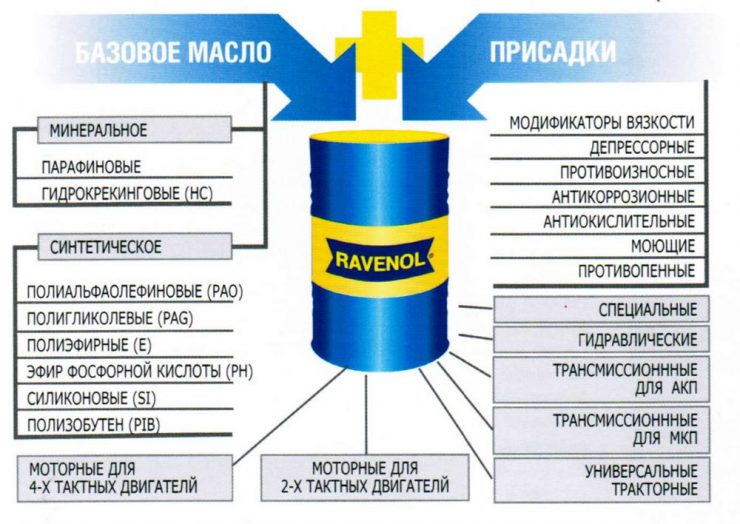
How to read markings on oils? NS. AND
Content
We will find on the market many types of oilsdesigned for various types of engines. The markings on the packaging do not make it easy to choose, so it is worth learning how to read them. What to look for when buying oil? What kind Parameters check your car?
What will you learn from this post?
- How to read labels on oil packages?
- What is ACEA and what is API?
- What is the viscosity grade of the oils?
Shortly speaking
There are many types of motor oils on the market. They are different from each other price, quality i technical specifications... When choosing a suitable oil, consider the type of vehicle, the type of fuel used in the vehicle, Atmospheric conditionsand the driver's driving style. In order to avoid sudden changes dangerous to the engine, each car manufacturer writes in the service book the oil quality class recommended for a given car brand, which is the manufacturer's standard or a standard in accordance with ACEAor API... Thanks to this, in order to choose the right oil, it is enough to carefully read the labeling on the packaging. So how do you read them?
Oil viscosity classification
A very important parameter of lubricants is viscosity gradewhich determines the temperature at which the oil can be used. It determines the degree to which the oil protects the mating parts. Power Supply from wear and tear. The viscosity of engine oils is determined by the viscosity classification. SAE, developed by the American Society of Automotive Engineers. The oil is subjected to numerous tests, the results of which determine the lubricating properties of the oil at low and high temperatures. Highlighted SAE viscosity grade six classes of oils summer and six classes of winter oils. Most often, we are dealing with all-season motor oils, described by two values separated by a dash, for example “5W-40”.
The numbers in front of the “W” (W: Winter = Zima) indicate low temperature fluidity. The lower the number, the lower the permissible ambient temperature at which the oil can be used. Oils marked 0W, 5W 10W warranty easy to download engine and fast supply of lubricant to all points of the engine, even at very low temperatures.

The numbers after "-" indicate viscosity at high temperatures. The higher the number, the higher the ambient temperature can be, at which the oil does not lose its lubricating properties. Oil ratings 40, 50 and 60 provide proper engine lubrication at ever higher temperatures.
Currently, all seasonal oils (5W, 10W, 15W or 20, 30, 40, 50) have been replaced with multigrade oils (5W-40, 10W-40, 15W-40), adapted to the high needs of modern drivers. Multigrade oils are suitable for both high and low temperatures. Using the right oil not only protects the engine but also increases it driving comfort and allows reduce fuel consumption.
What is ACEA and what is API?
One of the most important rules when choosing the right lubricant: qualitative classification... It determines the properties of the oil and its suitability for a given type of engine. ... There are two types of classification:
- European ACEA, developed by the European Engine Manufacturers Association, and
- American API American Petroleum Institute
This division was created due to the differences in engine design between European and US-made.
Both classifications divide oils into two groups: gasoline engine oils and diesel engine oils. Both classifications are usually indicated on the packaging of oils.

According to the API classification, engine oils are divided into those marked with a symbol:
- S (for gasoline engines) and
- C (for use in diesel engines).
Quality class define the sequential letters of the alphabet written after the symbol S or C. The group of oils for spark ignition engines includes the symbols SA, SB, SC, SD, SE, SF, SG, SH, SI, SJ, SL, SM, SN. Compression ignition engines use oils designated CA, CB, CC, CD, CE and CF, CF-4, CG-4, CH-4, CI-4 and CJ-4.
The further the letter of the alphabet in the second part of the code, the higher the quality of the oil.
Only modern high-quality oils are included in the ACEA classification. She stands out four groups oils:
- for gasoline engines (marked with the letter A),
- for cars with self-ignition (marked with the letter B)
- oils "low SAPS"For cars (marked with the letter C)
- and for use in diesel engines trucks (marked with the letter E)

Grade A oils can be grade A1, A2, A3 or A5. Likewise, the quality of class B oils is designated as B1, B2, B3, B4 or B5 (for example, ACEA A3 / B4 stands for the highest oil quality and engine economy, and A5 / B5 stands for the highest oil quality and fuel economy).
Important: if the packaging says ACEA A ../ B .., this means that the oil can be used in both gasoline and diesel engines.
In addition to the API and ACEA classifications, they also appear on lubricant packaging. labels provided by manufacturers cars. Take care of your car with avtotachki.com.
Also check:
Engine oil viscosity grade - what determines and how to read the marking?
How to choose an engine oil in 3 steps?
What is the 1.9 tdi engine oil?
photo source: ,, avtotachki.com.
